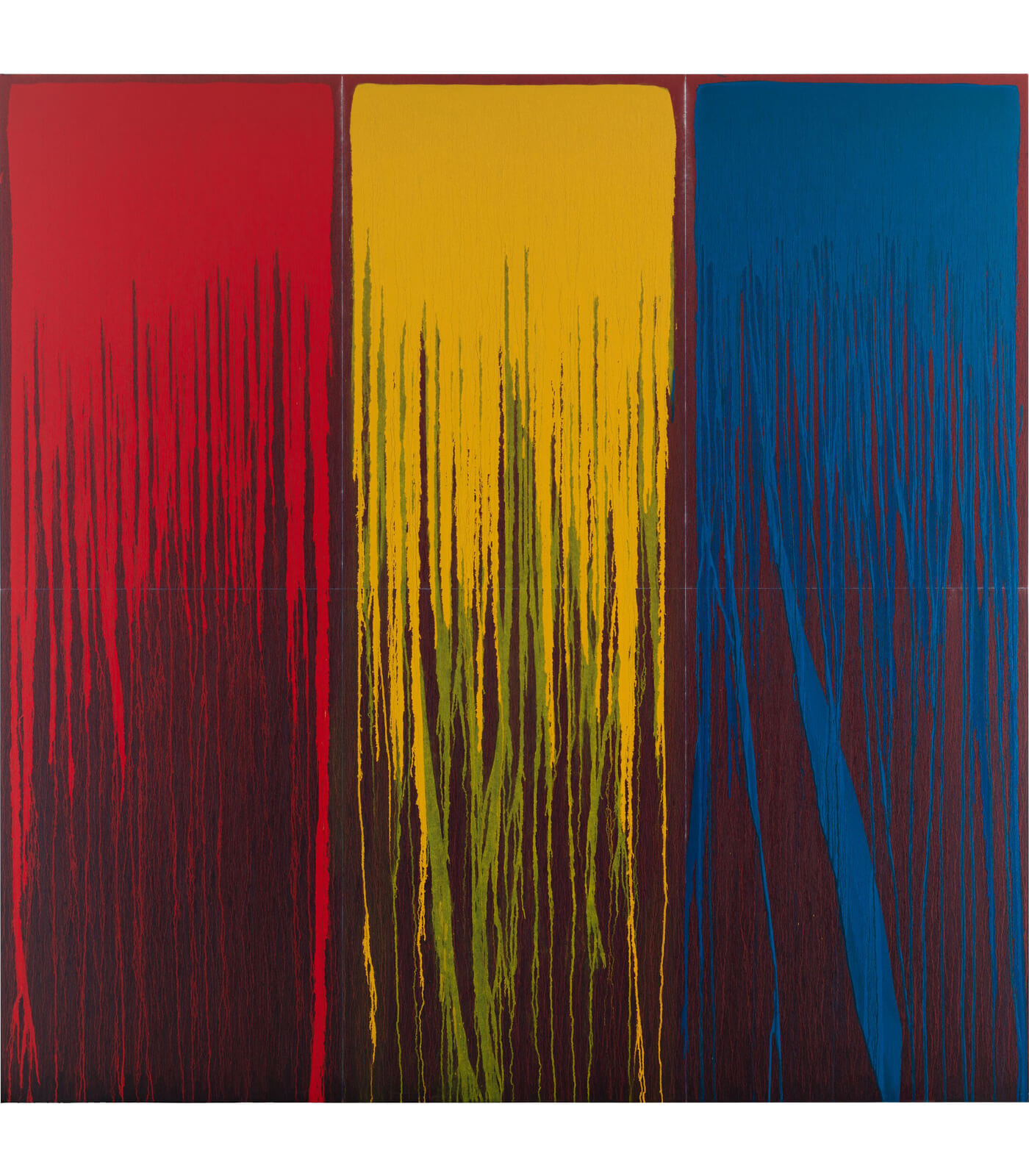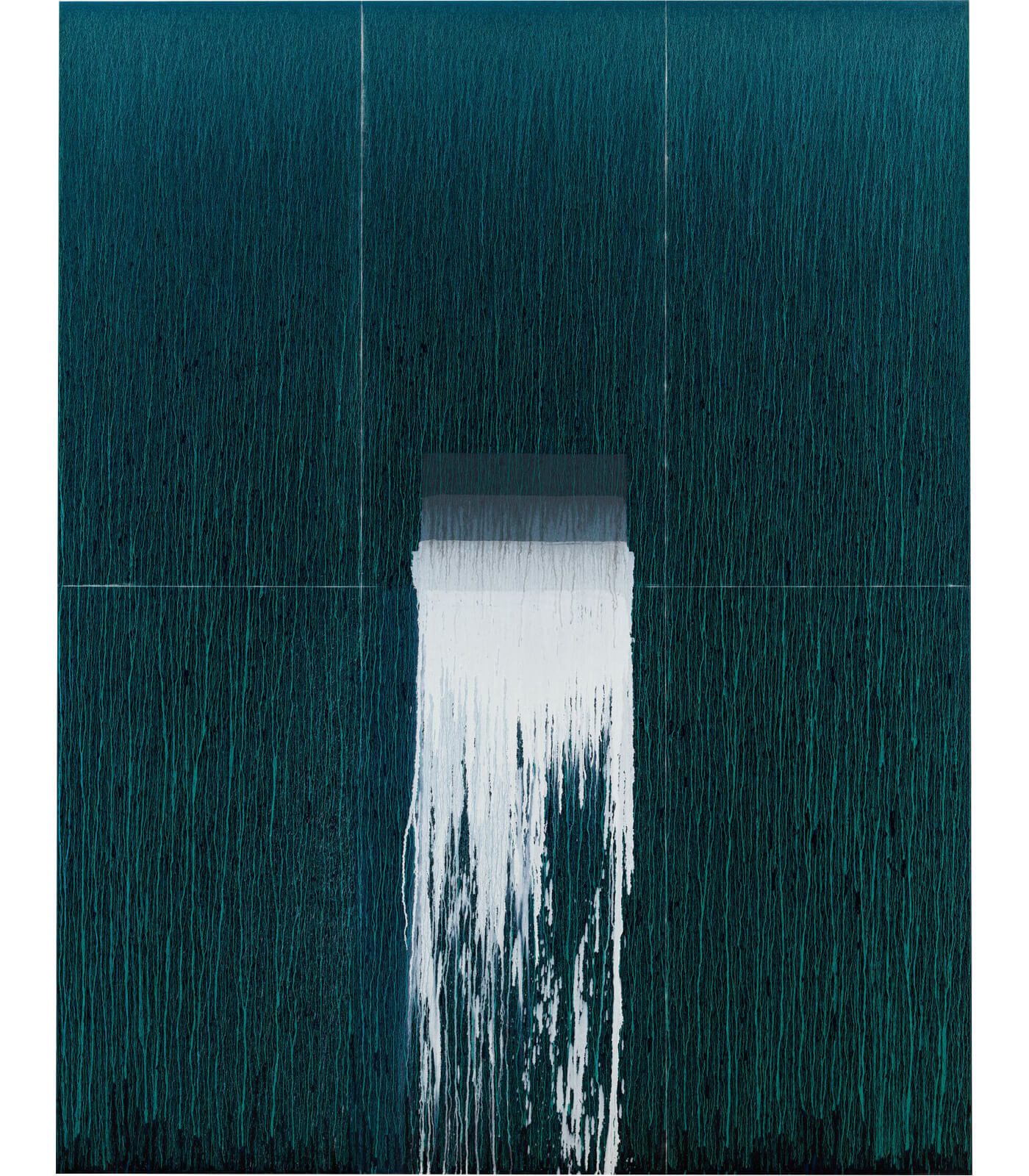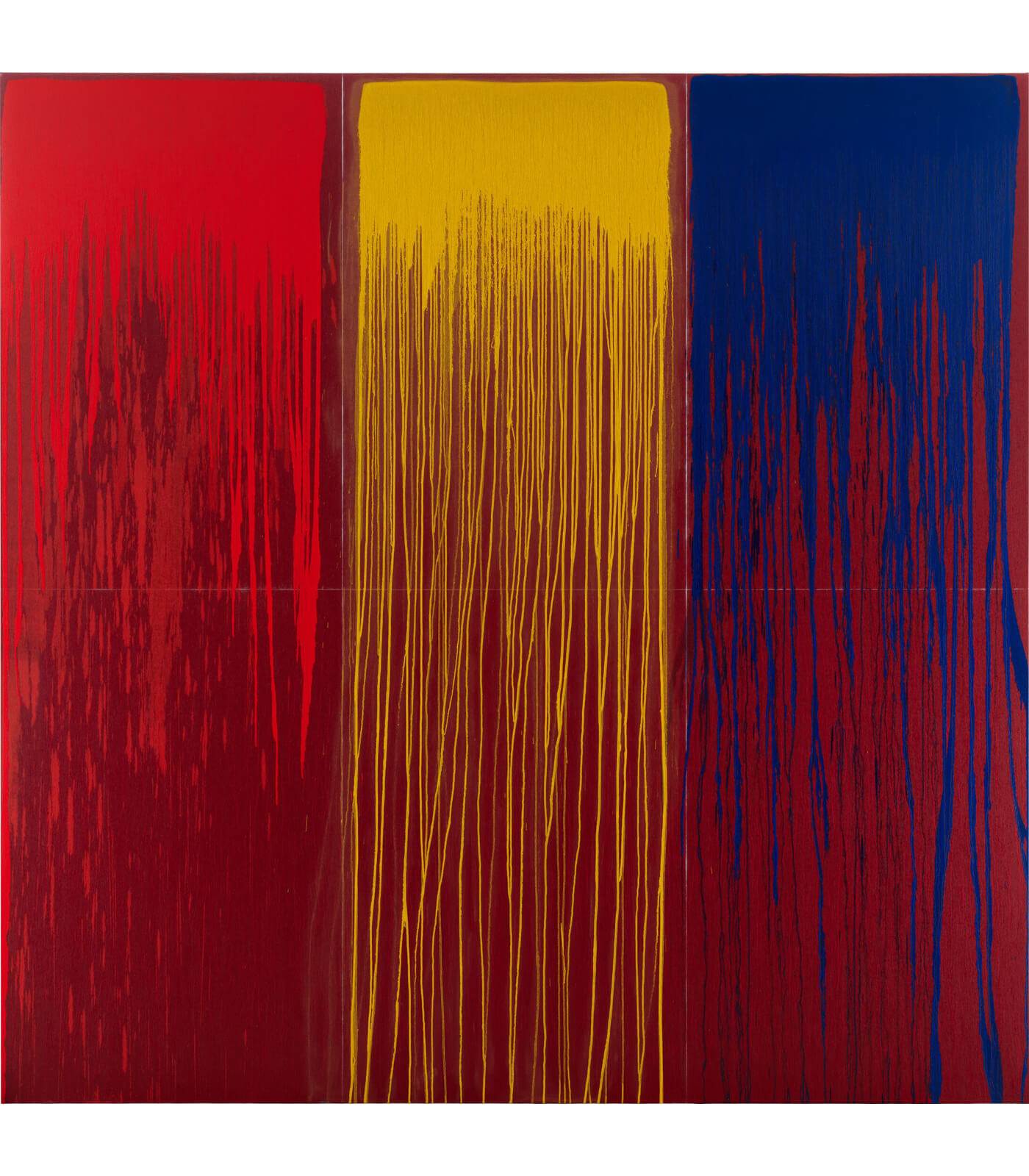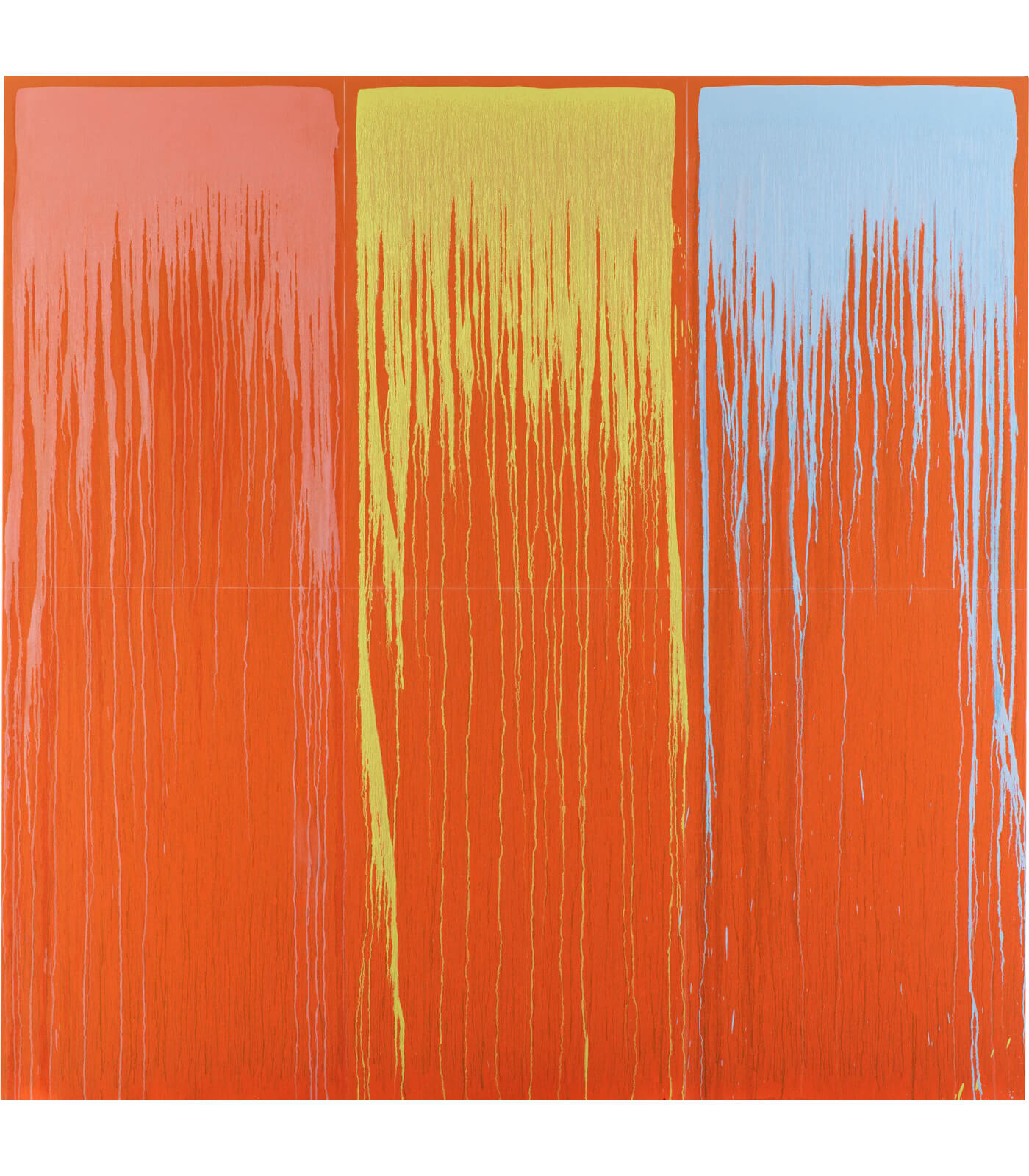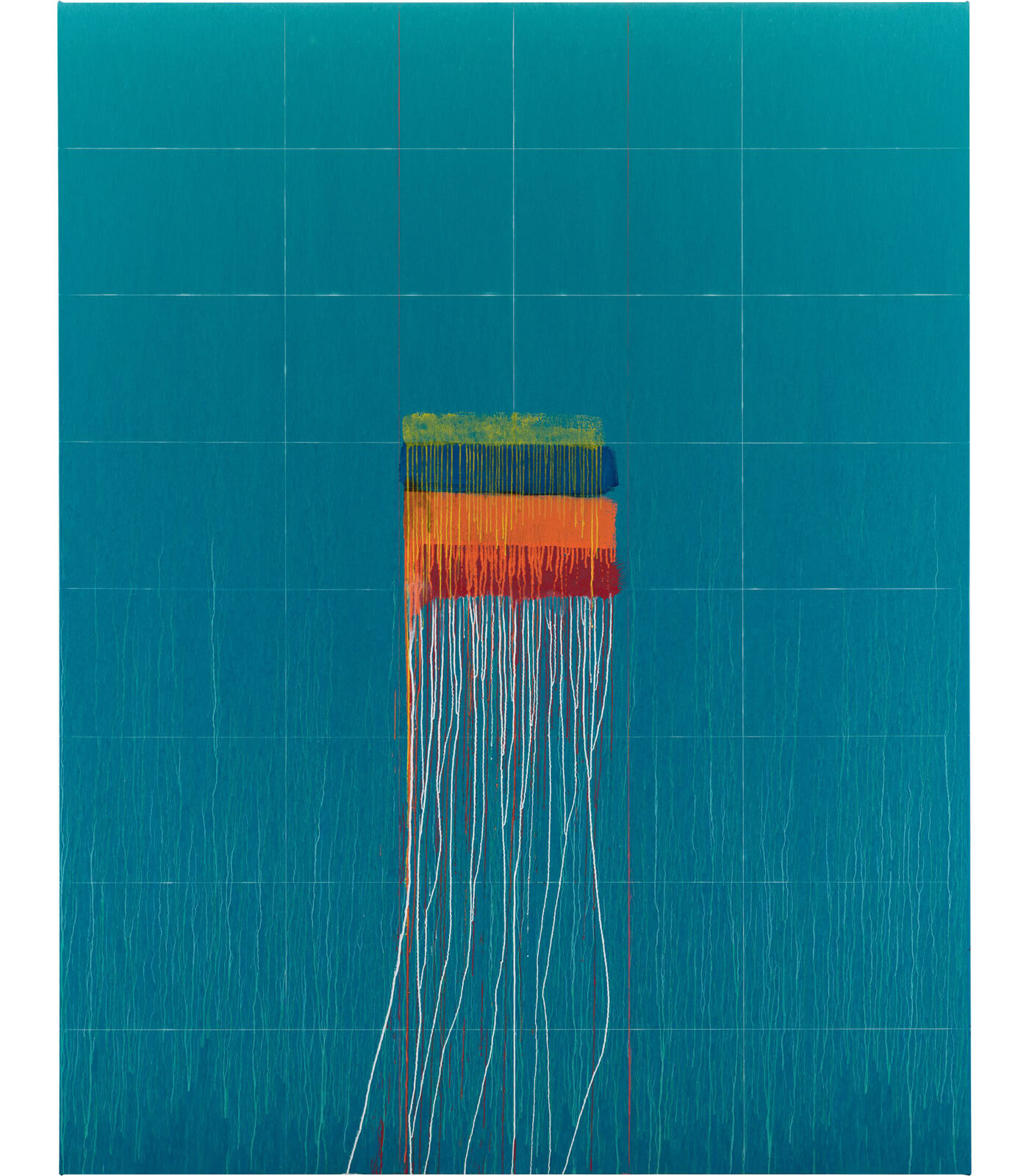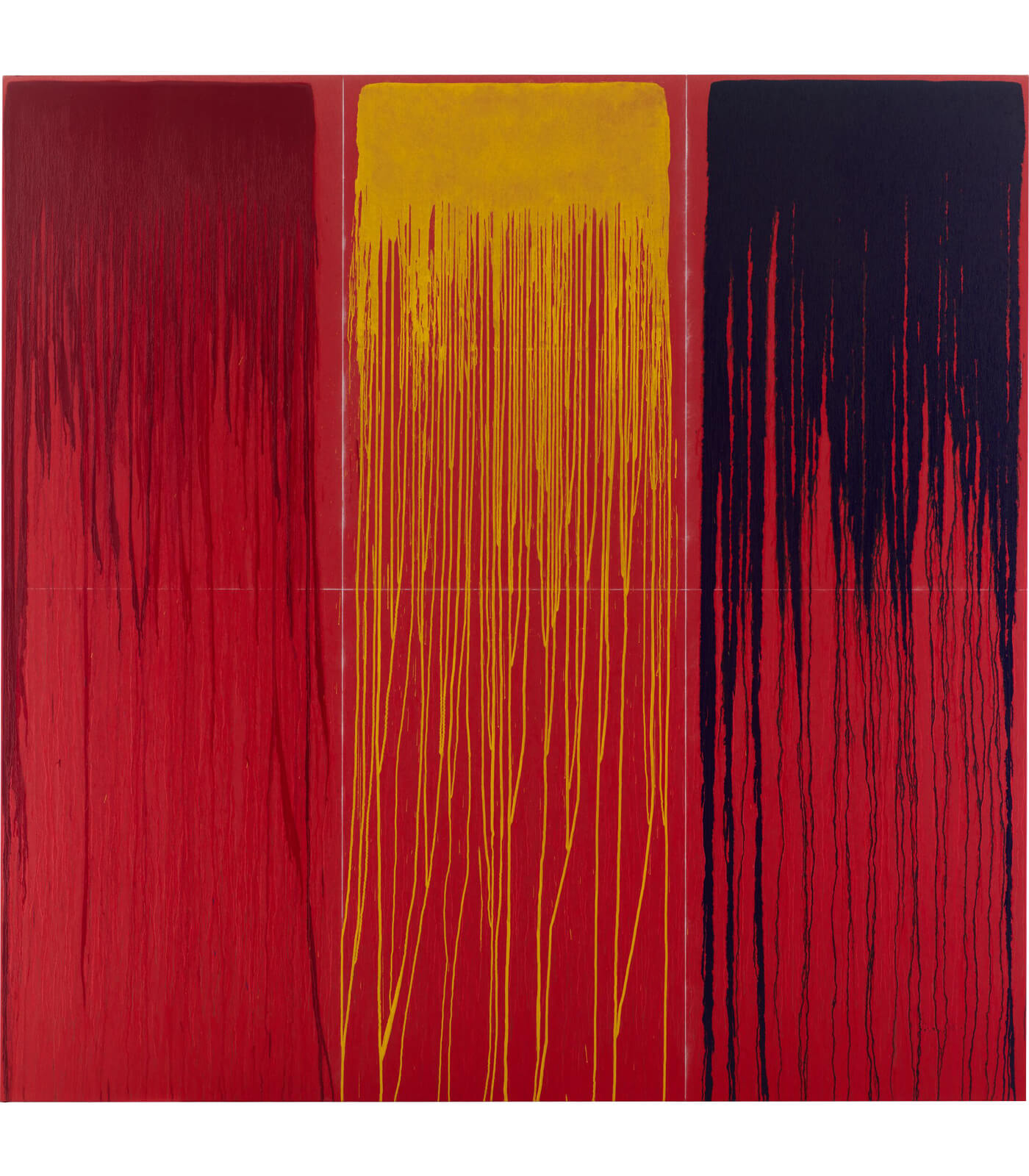
Pat Steir
Blue River and Rainbow Waterfalls
10 November – 23 December 2022
New York, 22nd Street
Pat Steir’s first exhibition with Hauser & Wirth, and her first solo show in New York City since 2017, ‘Blue River and Rainbow Waterfalls’ is comprised of vibrant new paintings, including the artist’s largest and most daring single canvas to date and a brand-new body of large-scale works, which are a continuation of her iconic ‘Waterfall’ series first begun in 1988.

‘Blue River’ is the largest single painting on canvas the artist has ever created, it is comprised of an enormous and seemingly boundless veil of blue bordered by sheets of oscillating red and silver. This work evokes not only the fluidity of water and paint, but also the vastness of the universe and its unfathomable power. An immense, durational work, 'Blue River' seems to point toward the river of time.
Blue River 2005 Oil on canvas 342.9 x 1129.7 x 6.4 cm / 135 x 444 3/4 x 2 1/2 in
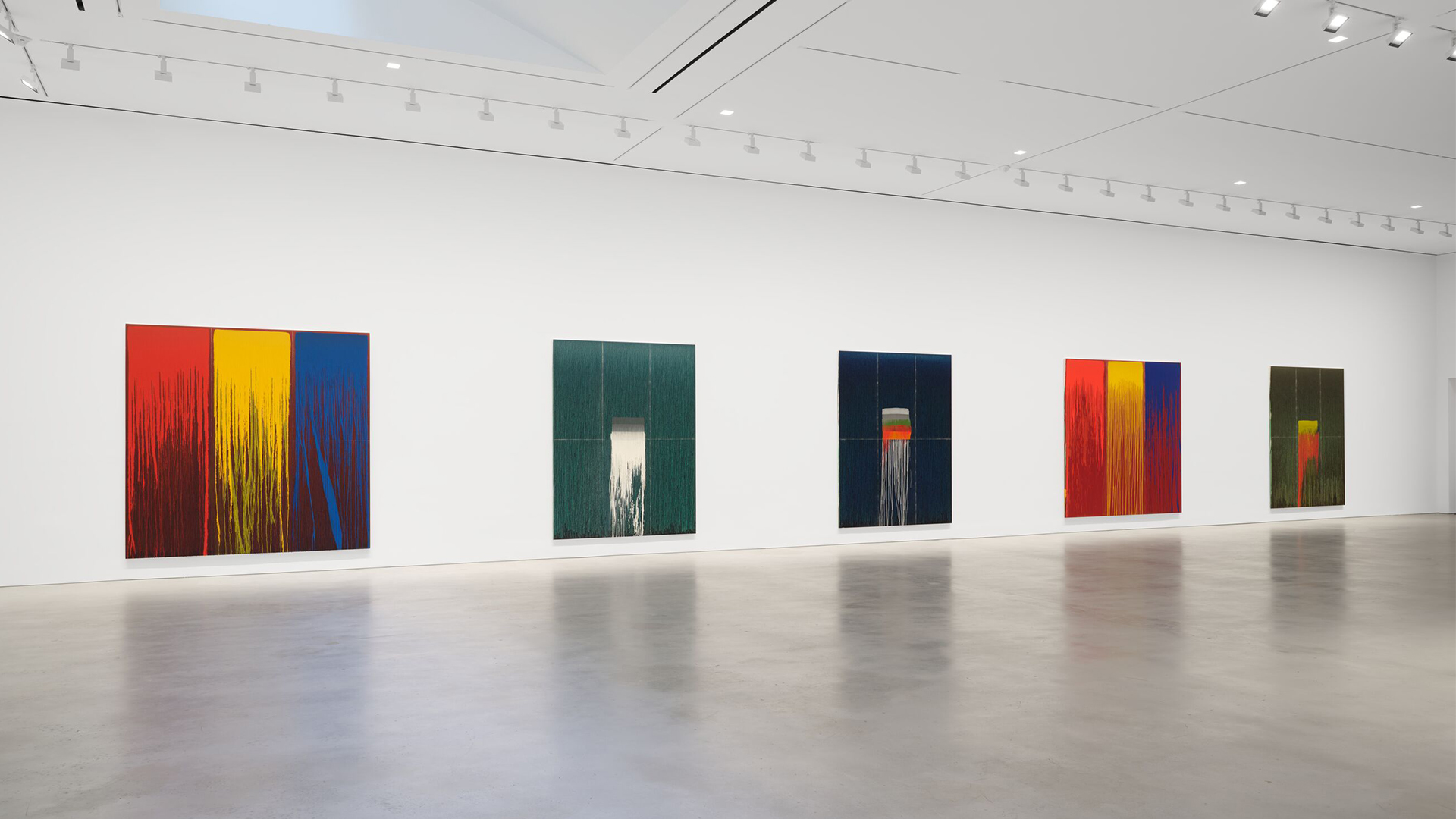
Steir has said, ‘I paint water often, but don’t depict it; it is the paint itself that flows.’ This phenomenon is especially evident in Steir’s new series of ‘Rainbow Waterfalls,’ a radiantly colorful extension of the artist’s earlier black and white 'Waterfall' paintings. That acclaimed body of work was developed through the artist’s innovative technique of pouring, flinging and throwing paint onto canvas, embracing the inherent fluidity of the medium and utilizing gravity and chance to determine outcomes.
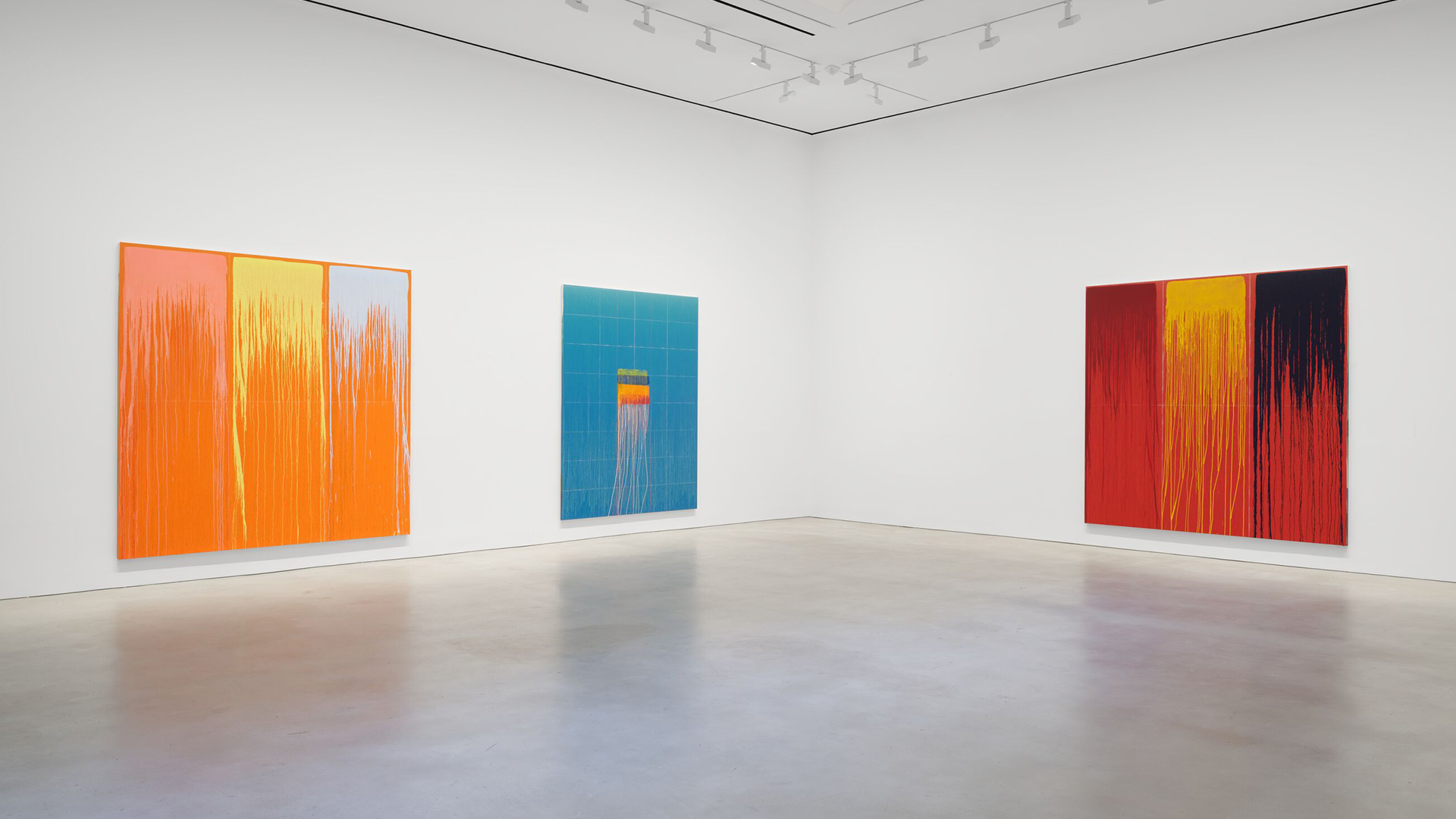
To create the ‘Rainbow Waterfalls,’ Steir first mapped out the compositions with chalk lines, establishing grids to guide where paint will land. While these faint white lines will blow away over time, some remain faintly visible in the final works––a remnant of one of the few elements of order Steir maintains over the works. Her canvases are primed in green, enabling the background to impart a distinct glow from behind. Afterward, Steir’s chosen pigments take the lead––cascading down the surface with the full story of their journey only revealed in the edges of the canvas. Patient observation rewards the viewer: the more time is spent looking at the paintings, the more dramatic their differences and details appear.
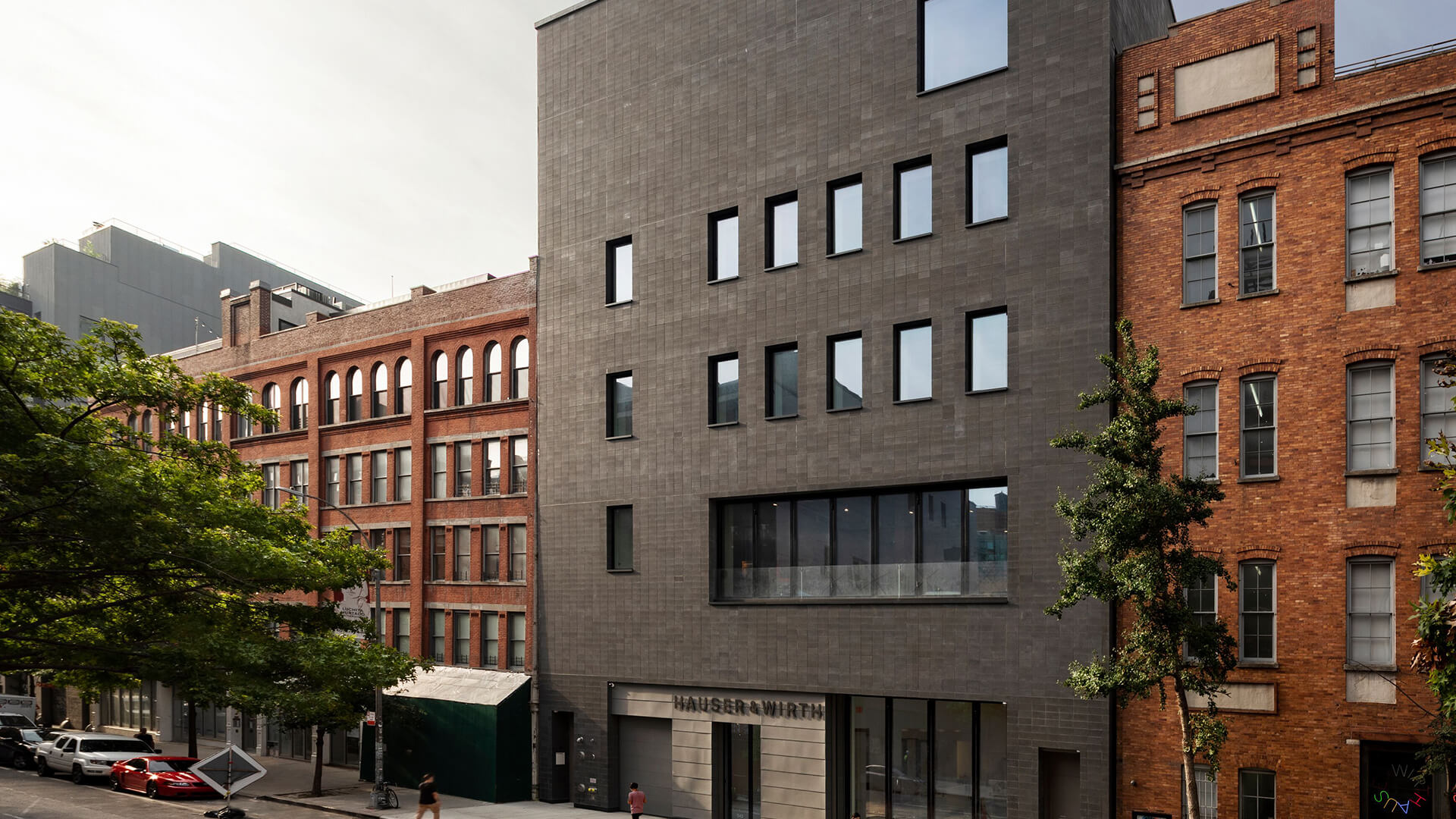
On view in New York
‘Pat Steir. Blue River and Rainbow Waterfalls’ is on view now through 23 December 2022 at Hauser & Wirth New York, 22nd Street.
About the Artist
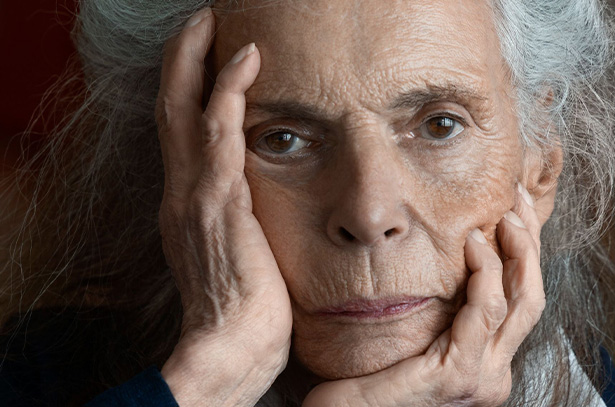
Pat Steir
Among the great innovators of contemporary painting, Pat Steir first came to prominence in the late 1970s and early 1980s for her iconographic canvases and immersive wall drawings. By the late 1980s, her inventive approach to painting—the rigorous pouring technique seen in her Waterfall works, in which she harnessed the forces of gravity and gesture to achieve works of astonishing lyricism—attracted substantial critical acclaim. Informed by a deep engagement with art history and Eastern philosophy, and a passion for artistic advocacy in the both the visual and literary realms, Steir’s storied five-decade career continues to reach new heights through an intrepid commitment to material exploration and experimentation.
Born in Newark, New Jersey in 1938, Steir attended New York’s Pratt Institute from 1956-58, where she took painting classes from Richard Linder and Philip Guston. Steir transferred to Boston University College of Fine Arts where she studied art and philosophy from 1958-60, before returning to Pratt, where she received her BFA in 1962. It was during her days as a student that she first became acquainted with many of the most influential conceptual and minimalist artists of the day, figures that would become Steir’s lifelong friends such as Sol LeWitt, Brice Marden and Lawrence Weiner. Shortly after graduating, Steir was invited to participate in her first group exhibition at The High Museum in Atlanta and only a year later was featured in group shows at the Philadelphia Museum of Art and The Museum of Modern Art, New York. These shows helped position her among the first group of women artists to gain recognition in the male dominated art scene of the time, paving the way for numerous long-term relationships with well-respected international galleries. In the mid-1960s, Steir worked as a freelance illustrator before being offered the role of Art Director at Harper and Row Publishing Company in New York. In the early 1970s she taught illustration at Parsons the New School for Design and then painting at the California Institute of the Arts where Ross Bleckner and David Salle were among her students. Steir simultaneously worked as an editor for Semiotext(e) magazine and was a founding board member of both the Printed Matter bookshop and the landmark feminist journal Heresies.
Steir also became friends with artists Mary Heilmann and Joan Jonas in the early 1970s, participating in an early improvisational film by Jonas and joining Heilmann and artist Joan Snyder in a three-person exhibition at the Paley & Lowe gallery. It was also during this time, at the invitation of Douglas Crimp, that Steir first travelled to New Mexico to visit artist Agnes Martin, a trip she would continue to make over many years until Martin’s death in 2004.
In the mid-1970s Steir showed her first iconic and critically acclaimed series of works—paintings of roses that were then completely crossed out, transcending the divide between figuration and abstraction. She also began to make site-specific wall drawings and room-sized installations. These installations transformed her paintings into a three-dimensional experience formed by light and line, allowing the viewer to step out of their reality and into an illusionary world connected to both nature and the progression of time. As Steir has said, ‘Installation allows the artist to paint out of the painting and into space and the viewer to move from space into a painting—the space where the act of painting takes place is in the imagination of the viewer.’
In the late 1970s, after traveling extensively both in the United States and in Europe, Steir and composer John Cage became good friends while working together at Crown Point Press. His embrace of chaos or randomness and non-intention in creative activity became especially influential on her practice, inspiring her to see new potential for accident and chance in artmaking. In the early 1980s, Steir made her first trip to Japan where she became fascinated by Japanese woodcuts and Chinese literati landscape painting, particularly ancient Chinese Shan shui (mountain water), which evoked nature rather than trying to replicate it. By the late 1980s, Steir began experimenting with the technique that has since come to define her oeuvre, no longer strictly using a brush which allowed her to take herself out of the picture. Subject to the influence of time, the finished work is what gravity and the weight of the paint has made. They are not paintings of landscapes but landscapes in and of themselves, an image that both evokes a waterfall and is a waterfall. As much as Steir’s process embraces chance, she retains complete command over the basic parameters. It is a harmonious collaboration between control and chaos, ‘chance within limitations.’ A remarkable synthesis of conceptualism, minimalism, and abstraction that challenges the postwar American canon, Steir’s practice remains limitless.
Inquire about available works by Pat Steir
On view now through 23 December 2022 at Hauser & Wirth New York, 22nd Street.
Related Content
Current Exhibitions
1 / 9
